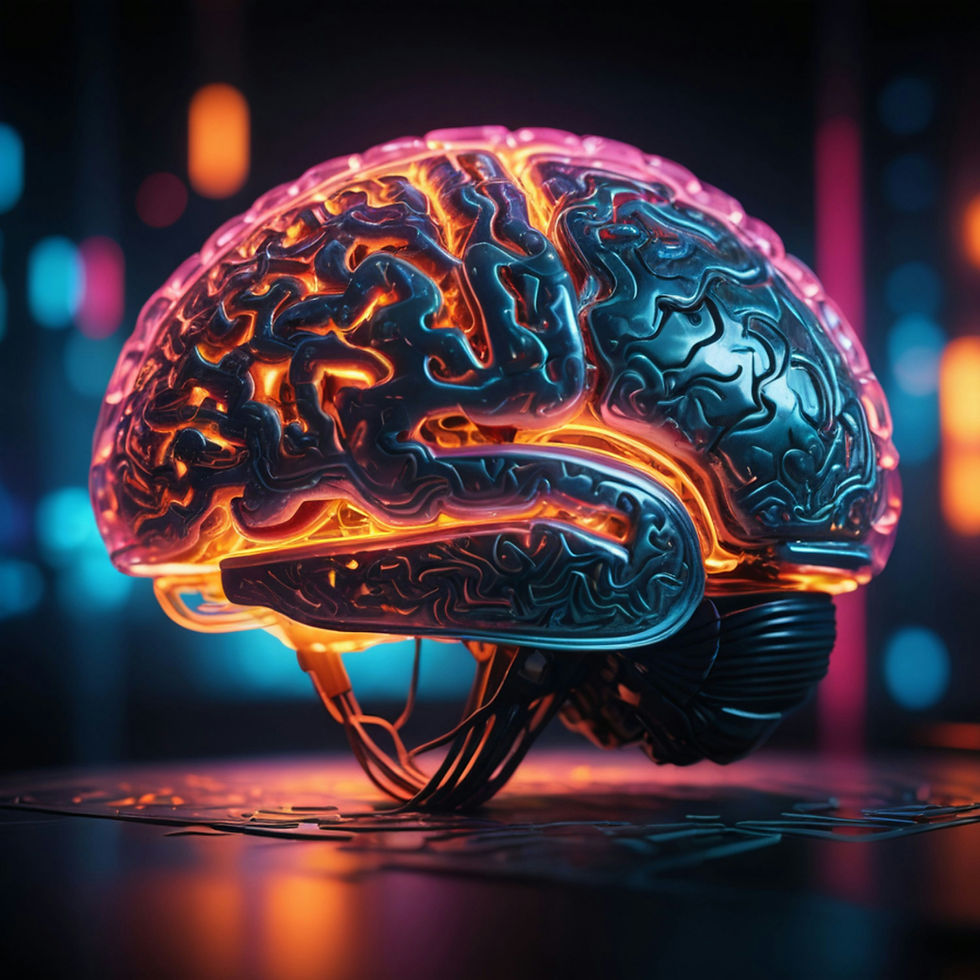Neuroscience - A Playground for Innovation. Understanding the Brain Chemistry
- Eli Lachina
- Sep 16, 2024
- 3 min read
Updated: Nov 9, 2024
Neuroscience has blossomed into an importnat ground for innovation, where technology, medicine, and cognitive science interact. This transformation is not only enhancing our understanding of the human brain but is also pushing the boundaries of what's possible in technology, health, and education.
Recent developments in network science are revolutionizing neuroscience. By treating the brain as a complex network, scientists are uncovering how neurons connect, communicate, and evolve. This approach has led to insights like the 'prospective configuration' in neural networks, a learning principle more efficient than traditional backpropagation, suggesting that our brains might be optimizing connections in ways we hadn't imagined. This understanding could lead to more advanced artificial intelligence, where neural networks grow and self-organize, mimicking biological processes more closely.
Interconnectivity and Communication and BCI
The visualization of neurons extending through micro-tunnels to establish connections, showcases the physical networking of neurons. Such studies not only mesmerize with their visual beauty but also illustrate the fundamental processes of learning and memory formation. These insights pave the way for innovations in neural interface technologies, where understanding these connections can help restore lost functions in patients through brain-computer interfaces.
The implications of brain-computer interfaces is carefully thought, it surely will bring evolution forward and will enhance the relationship between humans and technology tremendously.
The Social Brain and Technology
The discovery of large interneuron networks in the human cortex, which are sparse in other animals like mice, points towards the evolutionary leaps in human social cognition. This could inspire social robotics or AI that better understands and interacts with human emotions, potentially transforming how we integrate technology into social settings.

Why everyone should learn Neuroscience: Neurotransmitters: The Chemical Messengers of Innovation
Understanding neurotransmitters like dopamine, serotonin, oxytocin, and endorphins has transcended traditional neuroscience into realms of technology and lifestyle. Innovations in this area are not just about treating disorders but enhancing normal cognitive functions. For instance, designing environments or technologies that naturally boost these "happy hormones" could improve mental health, productivity, and social bonding, influencing everything from workplace design to virtual reality experiences.
Your brain is your engine and it is our responsibility to take good care of it to be able to carry us.
What is the petrol of our brain - those is the dopamine. Dopamine gives you the urge to wake up at the morning. It is the motivation transmitter. In case of less dopamin, we tend to depression. Dopamine can be increased through social interactions (or eating a cookie for example).
In the brain the gear system is serotonin, it is the dopamine regulator. Serotonin is the happiness hormone. If your brain has less doses of serotonin, this may be the explainer of an impulsive and rash behaviour or even gambling addiction. At night serotonin levels drop. If you find yourself typing messages, this is the explainer. The braking system in the brain is called GABA. It tells your brain it is your “it is time to take a rest” teller.
The amygdala has the job of scanning the environment and has access to the emergency breaks. The fear network is the way our body employed emergency brake through fear. If the amygdala responds too rashly, that is when we have panic attacks.
Chronic stress is when you do not make sure that all parts of the car are working well. Unfortunately, many times we keep driving even when our health balance is in trouble. We tend to take more care of our cars rather than our brains.
Regulating those imprint neurotransmitters can be done through better diet, exercises and your interactions.
Neuroscience has indeed become a playground for innovation, where every discovery about how our brain works opens new doors in technology, health, and beyond. From creating better human-AI interaction to enhancing our well-being through understanding our brain's chemistry, the field is at the forefront of merging human biology with technological advancement. As we continue to explore this playground, the potential for groundbreaking innovations seems limitless, promising a future where our understanding of the brain not only heals but also enhances human capability.

Comments